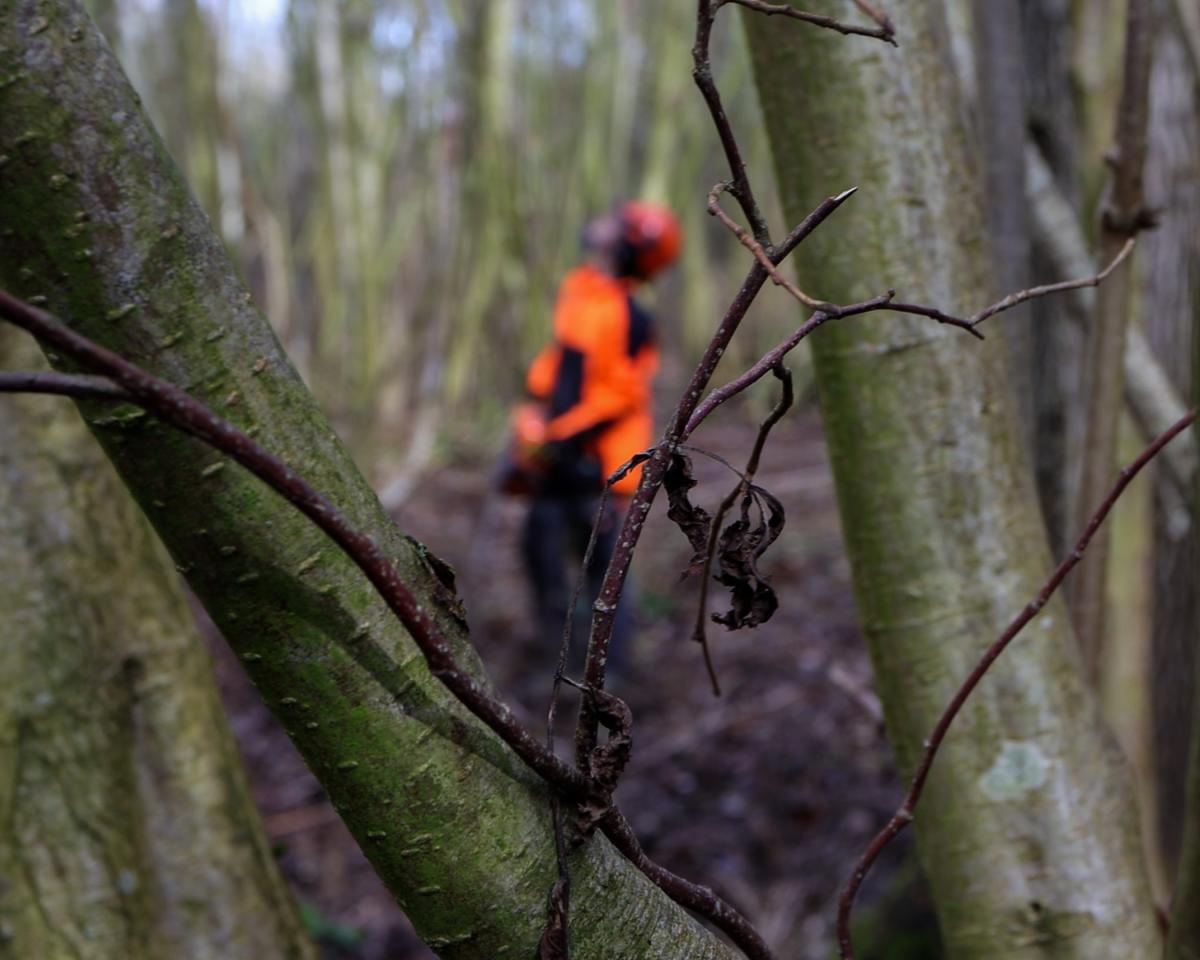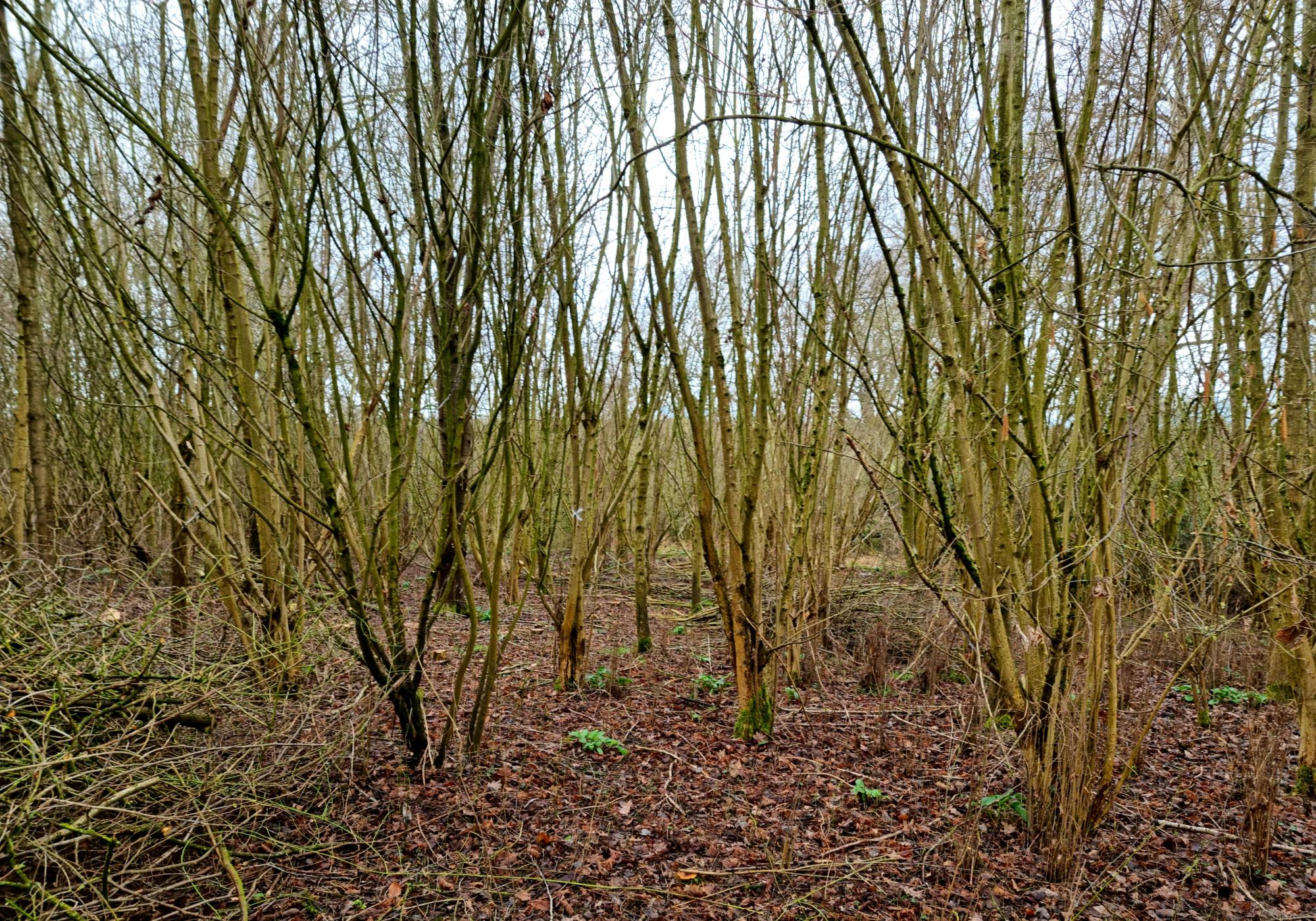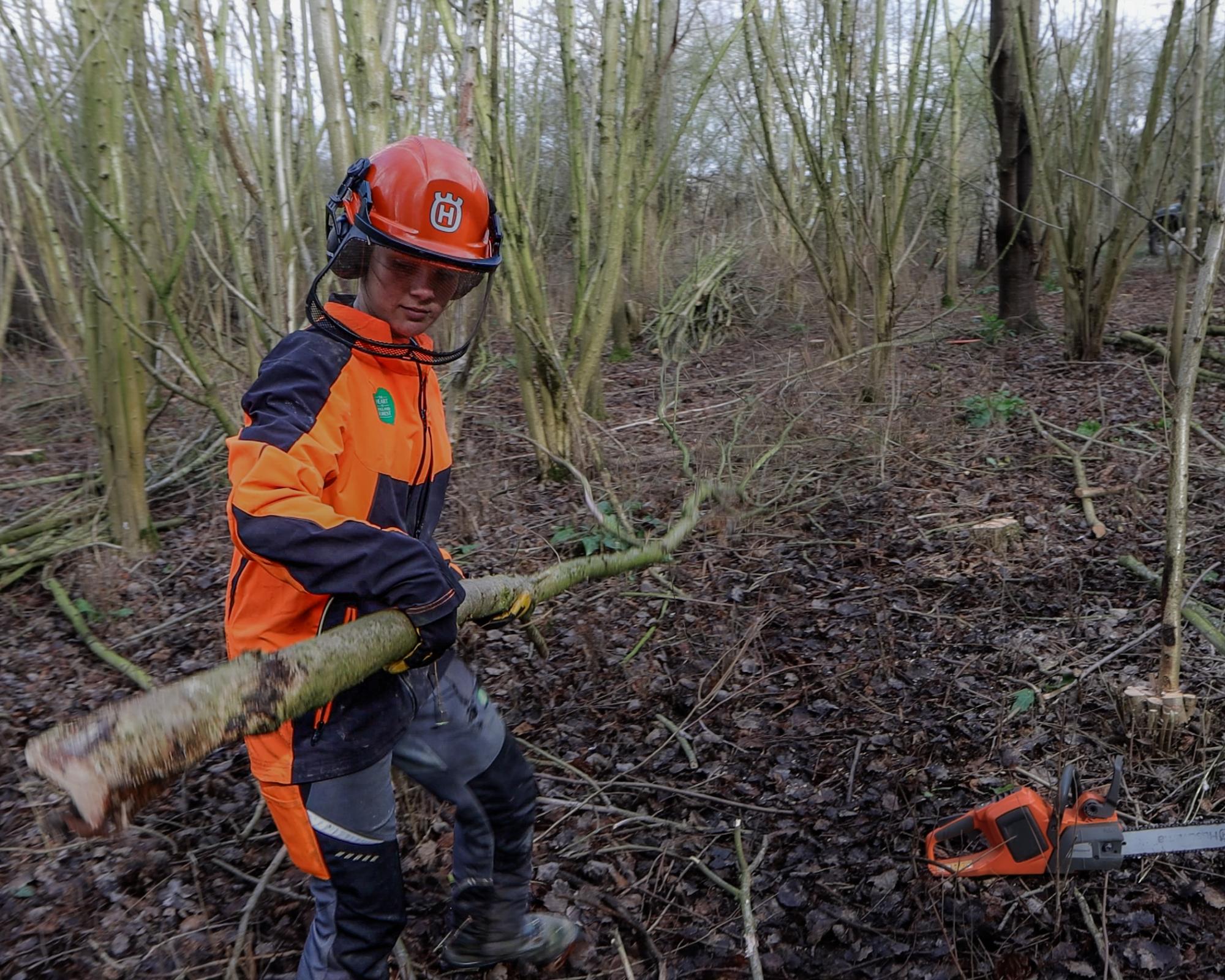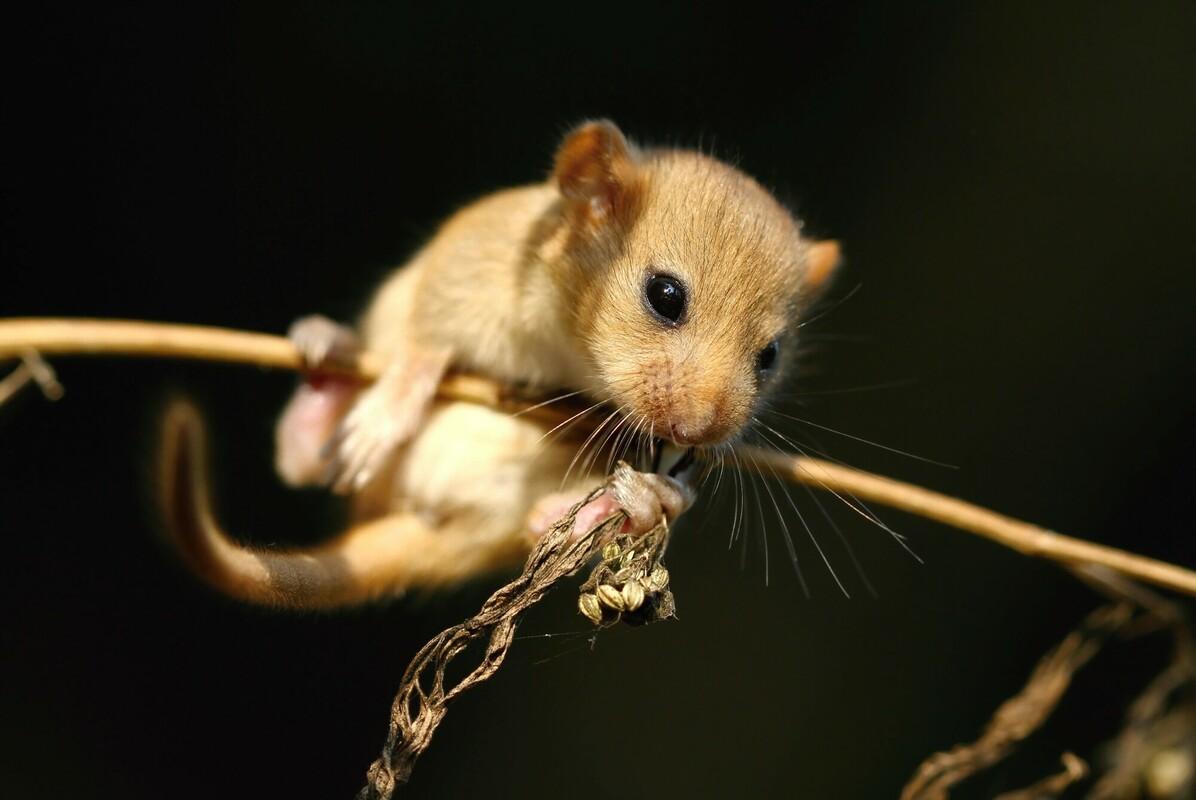
Hazel coppicing in the Forest
We are creating and conserving a huge 30,000 acre native broadleaf Forest in the heart of England. To ensure it is successful, and that it is here for generations to come, we need to make sure it is well maintained and cared for. As the Forest matures and continues to grow there are various techniques that are used by our forestry team to ensure the woodlands remain healthy.
Last month, after the final tree saplings were planted out, the forestry team turned to woodland maintenance, in particular the coppicing of our hazel.
What is coppicing?
Coppicing is a pruning method where a tree is cut to ground level (it derives from the French word to cut – coup), resulting in regeneration of new stems from the base (the stool). It is commonly practiced in cycles with the aim of rejuvenating and renovating some of the trees, hedges and shrubs in the Forest.
Coppicing is renowned as an ancient woodland management method, but to this day we still undertake coppicing because of the benefits it has to our woodlands, wildlife, and the environment.

Coppicing hazel trees in the Forest
Coppicing is a simple but effective technique whereby our forestry team cuts back all stems of the hazel to ground level. Hazel trees are coppiced in the Forest on a cycle of five to eight years – this provides the hazel tree plenty of time to establish its new growth. A coppice stool, the name for a tree cut to produce multiple stems from one stump, might have anywhere from five to 30 stems emanating from the cut stump.
A healthy, resilient hazel will continue to provide good quantities of nuts for wildlife during the winter months, as well as delightful pops of red flowers for pollinators during the early spring.
How do we do it?
Senior Forest Ranger, Ian Haywood, explains more:
“First the team clears around the stool and then cuts the lateral growth away initially to open access into the stool.
I always say to the team, start by cutting away the smaller stems, putting useable products to one side. This is a time-efficient practice, but also means we can save as much of the wood as possible to repurpose.
It is good practice to cut and process as you go, separating piles of brash (the brittle, fragile twigs) from other products. This way we are left with a safe and neat working area around a stool that needs taking down to around four inches. If the area is on an extraction route (a path to remove the woodland products) it may need to be taken down lower.”
By continuing the care for our trees, we are protecting our future. Sustaining healthy woodlands and hedgerows is vital to the charity’s conservation efforts.

What happens to all the wood?
It is important to recognise that coppicing is a technique in which we care for our trees, but what happens to all the wood once we are finished? Our forestry team adopts sustainable practices and re-uses the cut hazel wood for a variety of purposes dependent on the size and form of the branches:
Habitats - bent, knotty tops and brittle older growth are used for dead hedging and log piles creating microhabitats for Forest inhabitants such as insects, small mammals and even birds.
Firewood - anything over 2 inches in diameter could be considered firewood, but the bigger the better!
Hedgerow stakes – branches 1-2 inches in diameter that are straight (ideal length is 6ft) are great for structure. The shorter lengths of straight stakes we use to support the dead hedge habitats, as well as stakes for hurdles and fences. You can see some of our handmade hurdles in the entrance of Dorothy’s Wood.
Bean sticks/heatherings/binders – young shoots with the thick end of an inch or less can be used in several ways. Bean sticks can be around 8ft and are usually bill-hooked at the top end and along the length. Heathering and binders are usually left uncut at the top end and are left in full length as they are used for whipping the top line of a hedgerow to neaten it up and hold it together, or can be used to wind into hurdles. The longer the better with these, and ideally, they should be young and supple enough to twist the fibres.
Our Trees Call to Action Fund Project Delivery Officer, Craig, explains more about coppicing hazel:
Benefits to wildlife
Coppicing is an imperative part of the Forest management plan. In the dormancy season, our forestry team uses the coppiced wood to create a range of habitats for plants and wildlife, to continue to increase and sustain the biodiversity in our woodland areas. This can be by laying the wood in piles on the woodland floor, creating miniature ecosystems, or creating open areas where the coppicing takes place, allowing more light to the forest floor. This cycle of cutting and regeneration brings diverse structure to the understory of the woodland.
But it is not just the cut down branches and polls of the tree that create habitats. After the hazel has been coppiced, it creates a multi-stemmed shrub rather than a large single-trunked tree, prolonging the life of the tree itself. The coppiced hazel stool is an ideal habitat for the Red Listed dormouse to build a nest.

History of coppicing
Coppicing, although disappointingly a method that is seeing a decline across many woodlands in England, has valuable benefits to the environment, biodiversity and conservation, and has been part of the United Kingdom’s heritage as far back as the Stone Age.
If you have a hazel tree at home, with a healthy five to eight year coppicing plan, you can sustainably use the wood for your own benefit, such as carving and crafting. However, we recommend if you have the space to give back to nature, you can also create your very own log pile habitat to see if you can attract wildlife.
Supporting the woodlands in the Forest
It is vital that we have enough resources to continue to provide a high level of maintenance for not only the current woodlands in the Heart of England Forest, but also the 233 acres of new woodland we have planted this winter.
If you would like to be a part of our continued growth and conservation efforts, please consider supporting our work. You can do this by simply donating or dedicating a tree.
However, if like others, you want to make an ever-lasting impact then leaving a legacy will greatly help not only the Forest but also the planet for years to come.



